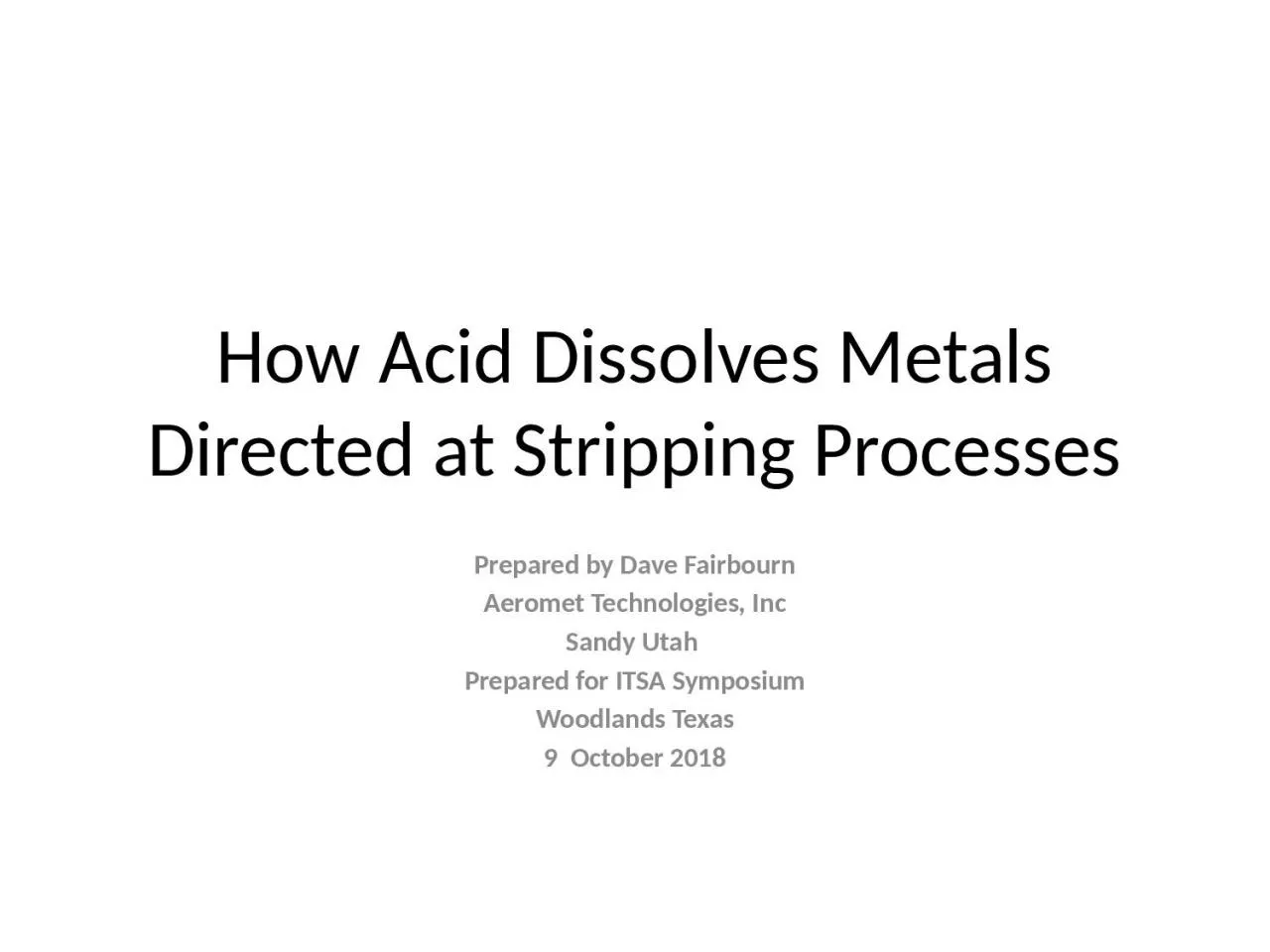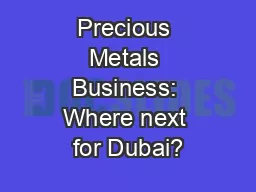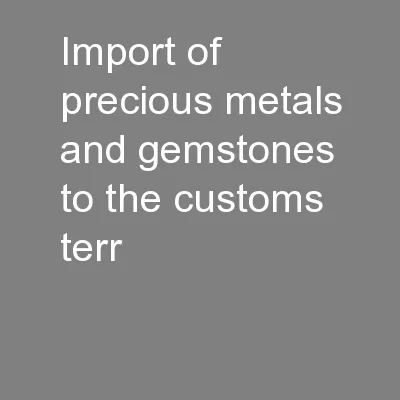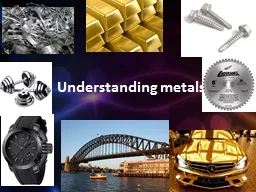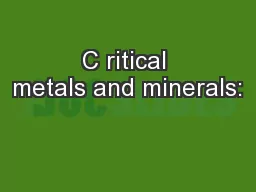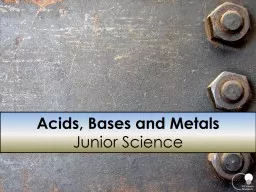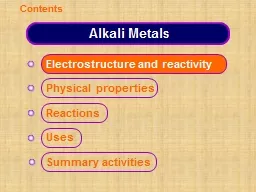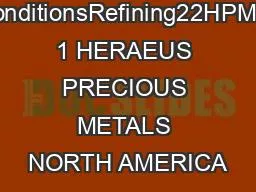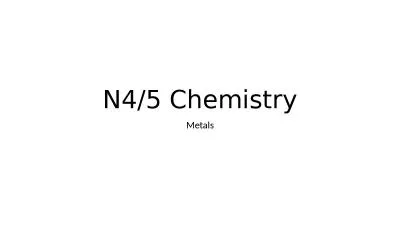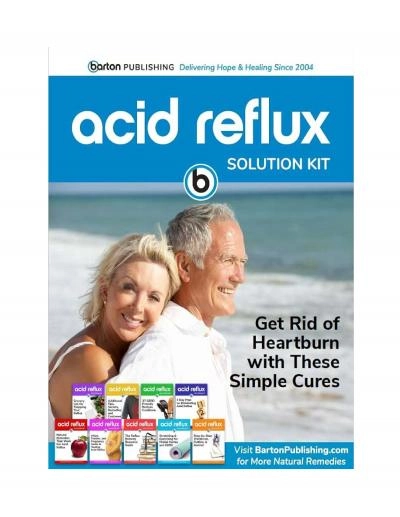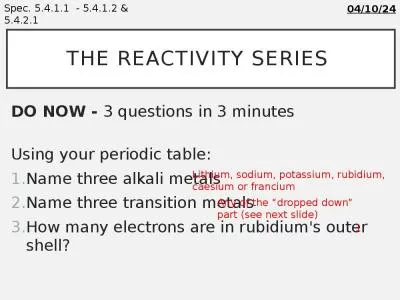PPT-How Acid Dissolves Metals
Author : paige | Published Date : 2023-08-30
Directed at Stripping Processes Prepared by Dave Fairbourn Aeromet Technologies Inc Sandy Utah Prepared for ITSA Symposium Woodlands Texas 9 October 2018 Why Strip
Presentation Embed Code
Download Presentation
Download Presentation The PPT/PDF document "How Acid Dissolves Metals" is the property of its rightful owner. Permission is granted to download and print the materials on this website for personal, non-commercial use only, and to display it on your personal computer provided you do not modify the materials and that you retain all copyright notices contained in the materials. By downloading content from our website, you accept the terms of this agreement.
How Acid Dissolves Metals: Transcript
Download Rules Of Document
"How Acid Dissolves Metals"The content belongs to its owner. You may download and print it for personal use, without modification, and keep all copyright notices. By downloading, you agree to these terms.
Related Documents

